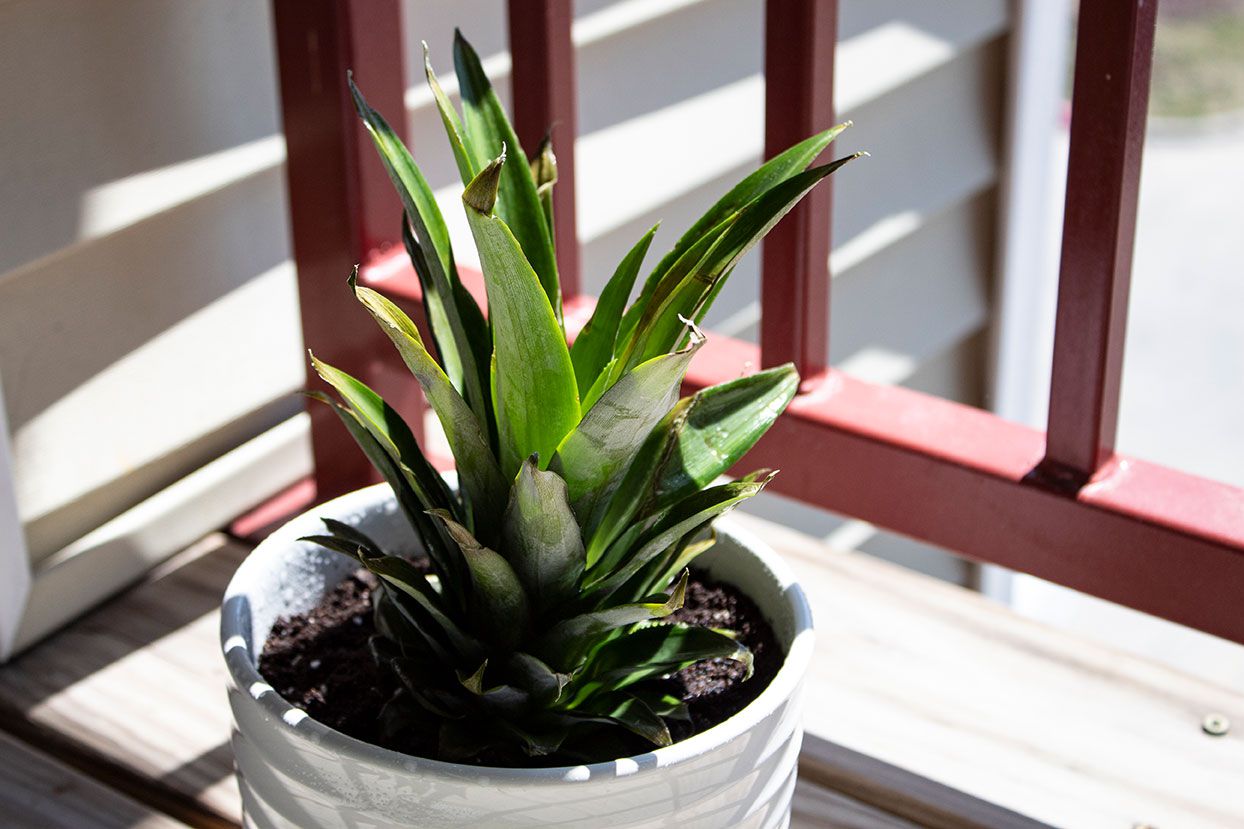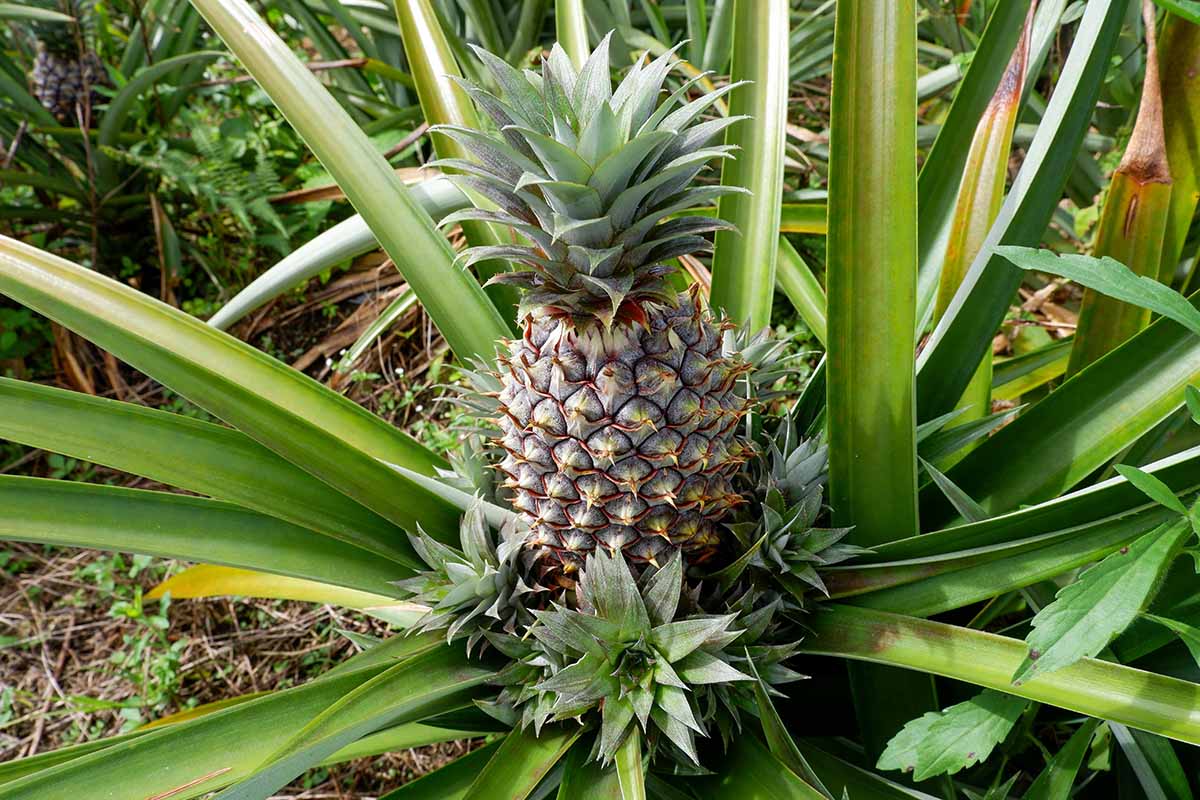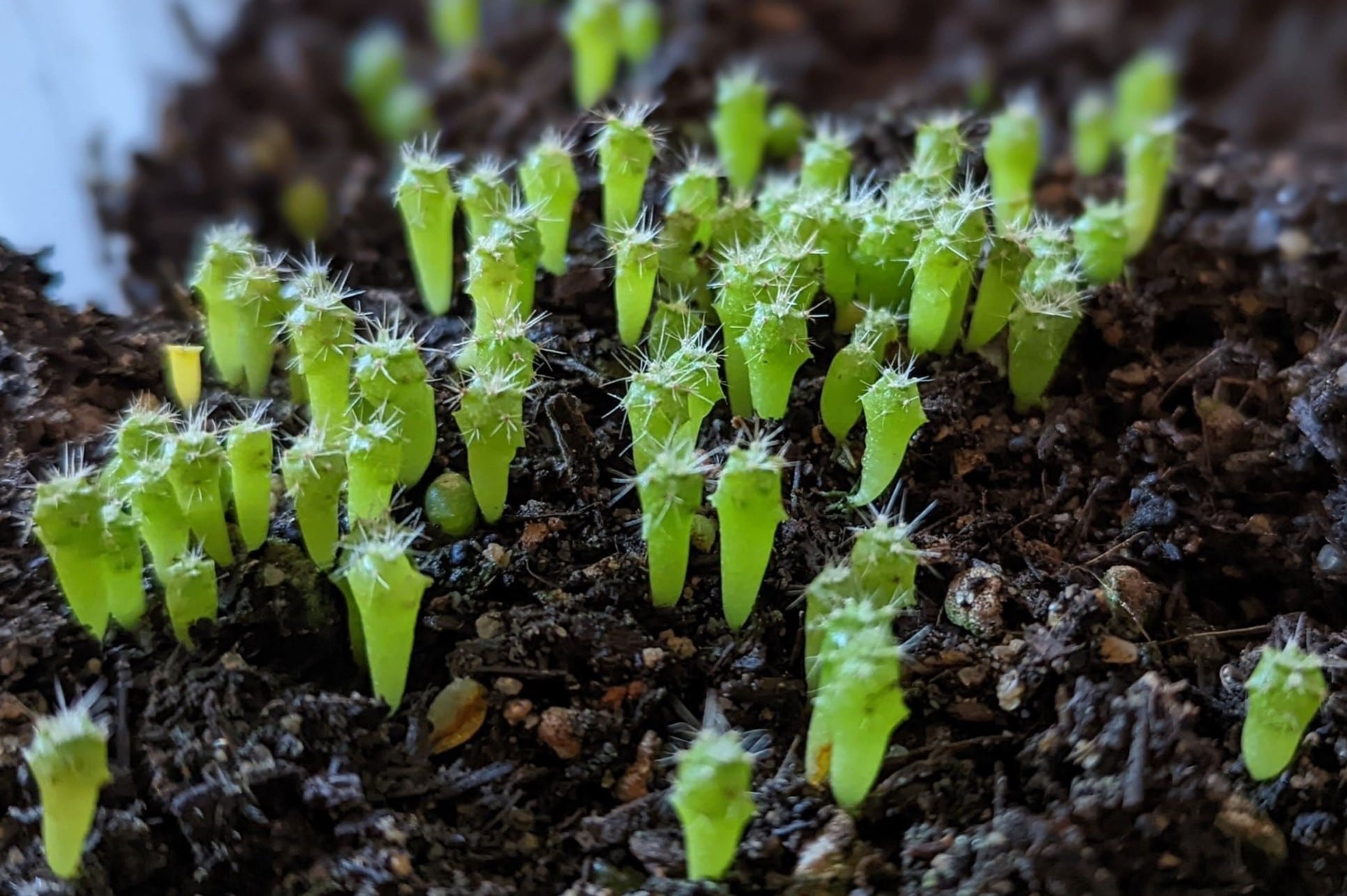Home>Garden Essentials>How To Grow A Pineapple From Seed


Garden Essentials
How To Grow A Pineapple From Seed
Modified: March 15, 2024
Learn how to grow a pineapple from seed in your garden and enjoy the sweet taste of homegrown fruit. Step-by-step guide and expert tips to succeed.
(Many of the links in this article redirect to a specific reviewed product. Your purchase of these products through affiliate links helps to generate commission for Storables.com, at no extra cost. Learn more)
Introduction
Growing your own pineapple from seed can be a rewarding and fun experience. Not only will you have a beautiful tropical plant to admire, but you may also have the opportunity to enjoy delicious homegrown pineapple in the future. While it may take some time and patience, growing a pineapple from seed is a great way to connect with nature and experience the joy of watching a plant grow from a tiny seedling into a full-grown fruit-bearing plant.
In this article, we will walk you through the step-by-step process of growing a pineapple from seed. From choosing a ripe pineapple to caring for the plant, we will provide you with all the information you need to successfully grow your own pineapple at home.
So, let’s get started on this exciting gardening journey and learn how to grow a pineapple from seed!
Key Takeaways:
- Growing a pineapple from seed is a rewarding journey that requires patience and care. From choosing a ripe pineapple to harvesting and caring for the plant, the process offers a delightful connection with nature and the joy of gardening.
- With time and attention, you can successfully grow your own pineapple plant. Enjoy the process and savor the sweet rewards of homegrown pineapple, knowing that your patience and care have led to a fruitful and satisfying outcome.
Read more: How Long To Grow Pineapple From Seed
Step 1: Choosing a Ripe Pineapple
The first step in growing a pineapple from seed is to select a ripe and healthy pineapple. When choosing a pineapple, look for the following characteristics:
- Firmness: The pineapple should be firm to the touch, indicating that it is ripe. Avoid pineapples that feel mushy or have soft spots.
- Color: A ripe pineapple will have a vibrant golden-yellow color on its skin. Avoid pineapples with green or brown spots, as these may indicate that the fruit is not fully ripened.
- Aroma: Give the pineapple a sniff. A ripe pineapple emits a sweet and tropical aroma. If it doesn’t have any scent or smells fermented, it may not be the best choice.
- Size: Choose a pineapple that is a good size for your needs. Remember that larger pineapples may take longer to ripen and have more seeds.
It’s worth noting that commercially grown pineapples are often treated with chemicals, so if you prefer an organic approach, look for organic pineapples or consider sourcing pineapples from local farmers’ markets.
Once you’ve selected the perfect pineapple, it’s time to move on to the next step: harvesting the seeds.
Step 2: Harvesting the Seeds
Harvesting seeds from a pineapple might seem like a daunting task, but it’s actually quite simple. Follow these steps to extract the seeds from your ripe pineapple:
- Cut off the top: Use a sharp knife to cut off the leafy top of the pineapple, ensuring that you have at least half an inch of fruit attached to the top.
- Remove the outer layers: Carefully peel away the lower leaves from the pineapple top until you see small brown dots. These dots are the beginnings of the roots.
- Dry the top: Set the pineapple top aside in a cool, dry place for a few days to allow it to dry out completely. This will help prevent rotting when you plant it.
- Separate the leaves: Gently twist and pull the leaves to remove them from the pineapple top. Be sure to remove all the leaves until you reach the base.
- Peel off the skin: Carefully peel off the remaining skin to expose the core of the pineapple top.
- Separate the seeds: Using your fingers or a small knife, gently separate the individual seeds from the core. Be patient and take your time to avoid damaging the seeds.
Once you’ve harvested the seeds, it’s time to prepare them for planting.
Step 3: Preparing the Seeds for Planting
Preparing the pineapple seeds for planting is crucial to ensure their successful germination. Follow these steps to prepare the seeds:
- Wash the seeds: Gently rinse the harvested seeds under running water to remove any pulp or residue. Avoid using harsh chemicals or soap.
- Soak the seeds: Place the seeds in a bowl of warm water and let them soak for 24-48 hours. This soaking process will help soften the seed coat and encourage germination.
- Dry the seeds: After soaking, remove the seeds from the water and place them on a paper towel or clean cloth to dry. Ensure that they are spread out in a single layer and allow them to air dry for a day or two.
- Moisten the soil: While the seeds are drying, prepare the planting medium. Pineapple seeds prefer a well-draining soil mix. Moisten the soil slightly, making sure it is not overly wet. This will create a suitable environment for germination.
Once the seeds are dry and the soil is ready, it’s time to move on to planting the pineapple seeds.
Step 4: Planting the Pineapple Seeds
Now that you have prepared the pineapple seeds, it’s time to plant them. Follow these steps to plant your pineapple seeds:
- Select a container: Choose a small pot or seed tray with drainage holes to plant the seeds. Ensure that the container is clean and has been filled with well-draining, nutrient-rich potting soil.
- Plant the seeds: Make small indentations in the soil, about 1/4 inch deep, using your finger or a small tool. Place the pineapple seeds into the indentations, one seed per hole. Cover the seeds lightly with soil.
- Moisten the soil: Gently water the soil, ensuring that it is evenly moist but not waterlogged. Avoid overwatering, as this can lead to rotting.
- Provide warmth: Pineapple seeds require a warm environment to germinate. Place the container in a warm location with temperatures around 70-80°F (21-27°C). You can also cover the container with plastic wrap or a propagator lid to create a mini greenhouse effect.
- Patience is key: Pineapple seeds can take anywhere from 2 to 8 weeks to germinate, so be patient. Keep the soil consistently moist and monitor for any signs of growth.
- Transplanting: Once the seedlings have developed a few sets of leaves and are strong enough, they can be transferred to individual pots or containers with well-draining soil.
Remember to provide adequate sunlight for the pineapple seedlings, as they require bright, indirect light to thrive. With proper care and attention, your pineapple seeds will soon grow into healthy plants.
To grow a pineapple from seed, make sure to use fresh seeds from a ripe pineapple. Plant the seeds in well-draining soil and keep them warm and moist. It may take 2-3 years for the plant to produce fruit.
Read more: How To Grow Pineapple Seeds
Step 5: Caring for the Pineapple Plant
Once your pineapple plant has germinated and is growing, it’s important to provide the right care to ensure its health and development. Follow these steps to care for your pineapple plant:
- Watering: Water the pineapple plant regularly, keeping the soil consistently moist but not waterlogged. Allow the top inch of soil to dry out between waterings to prevent overwatering.
- Sunlight: Place the pineapple plant in a location that receives bright, indirect sunlight for at least 6 hours a day. Avoid placing it in direct sunlight, as this can scorch the leaves.
- Fertilization: Feed your pineapple plant with a balanced liquid fertilizer once every month during the growing season. Follow the instructions on the fertilizer package for proper application.
- Temperature and humidity: Pineapple plants thrive in warm and humid conditions. Maintain a temperature range of 60-85°F (15-29°C) and provide humidity by misting the leaves or placing a tray of water near the plant.
- Pruning: Remove any dead or yellowing leaves from the plant to promote healthy growth. Prune off any suckers (side shoots) that emerge at the base of the plant to focus the energy on the main plant.
- Pest control: Keep an eye out for pests such as mealybugs, aphids, and spider mites. If you notice any infestation, use organic insecticidal soap or neem oil to treat the affected areas.
- Support: As the pineapple plant grows, it may need support to prevent it from toppling over. Gently stake the plant or provide a plant support ring to keep it upright.
With regular care and attention, your pineapple plant will continue to grow and develop. Patience is key, as it takes about 18 to 24 months for a pineapple plant to mature and produce fruit.
Step 6: Transferring the Pineapple Plant to a Pot
As your pineapple plant grows, it will eventually outgrow its initial container. Here’s how you can transfer the pineapple plant to a larger pot:
- Select a suitable pot: Choose a pot that is larger in size, providing enough space for the roots to grow. Opt for a pot with drainage holes to ensure proper drainage.
- Prepare the potting mix: Use a well-draining potting mix that is rich in organic matter. You can also mix in some perlite or vermiculite to improve drainage.
- Carefully remove the plant: Gently remove the pineapple plant from its current container. Be careful not to damage the roots or disturb the soil around them.
- Place the plant in the new pot: Position the plant in the center of the new pot. Add fresh potting mix around the roots, ensuring that the plant sits at the same depth as it did in its previous container.
- Fill the pot: Fill the pot with potting mix, gently firming it around the plant to provide stability. Leave a small gap between the soil surface and the rim of the pot to allow for easy watering.
- Water thoroughly: Give the plant a thorough watering after transferring it to the new pot. This will help settle the soil and establish good root contact.
- Place in a suitable location: Find a spot for the potted pineapple plant that receives bright, indirect sunlight. Avoid placing it in direct sunlight, as it can scorch the leaves.
Remember to continue providing regular care to the pineapple plant, including proper watering, fertilization, and maintaining suitable temperature and humidity levels.
The transfer to a larger pot will provide the pineapple plant with more room to grow and flourish, ensuring its continued health and development.
Step 7: Harvesting the Pineapple
After months of care and patience, your pineapple plant is finally ready to yield its delicious fruit. Here’s how you can harvest a ripe pineapple:
- Observe the fruit: Keep an eye on the pineapple as it grows. When the fruit turns fully yellow or golden and has a sweet aroma, it is a good indication that it is ready for harvest.
- Check the crown: Examine the crown of the pineapple. If the leaves easily pull away from the fruit without any resistance, it is a sign that the pineapple is ripe.
- Use a sharp knife: Using a sharp knife, cut the pineapple from the plant, leaving a few inches of stem attached to the fruit. Be careful not to damage the plant or surrounding foliage.
- Inspect the fruit: Take a moment to inspect the harvested pineapple, looking for any signs of damage or rot. Discard any fruits that show signs of spoilage.
- Prepare the pineapple: Once you have harvested the pineapple, remove the crown and any remaining leaves. Cut off the top and bottom, and then slice the skin away to reveal the juicy flesh.
- Enjoy your homegrown pineapple: Your hard work has paid off! Now, savor the fruits of your labor by indulging in the sweet, tropical flavor of your very own homegrown pineapple.
It’s important to note that pineapple plants typically produce one fruit per plant, and it can take anywhere from 18 to 24 months for the plant to mature and bear fruit. But the reward of enjoying a homegrown pineapple is truly worth the wait.
Remember to continue caring for your pineapple plant after harvesting, as it may produce additional offshoots or suckers that can develop into new plants for future crops.
Congratulations on successfully growing and harvesting your own pineapple!
Conclusion
Growing a pineapple from seed may require time, patience, and care, but the rewards are well worth it. From selecting a ripe pineapple to harvesting the sweet and tropical fruit, the journey of growing your own pineapple offers a wonderful opportunity to connect with nature and experience the joy of gardening.
By following the step-by-step process outlined in this article, you can successfully grow your own pineapple plant. Remember to choose a ripe pineapple, harvest and prepare the seeds, plant them in well-draining soil, and provide proper care and maintenance as the plant grows. With time and attention, your pineapple plant will develop into a beautiful and fruitful addition to your garden or indoor space.
Throughout the process, it’s essential to remain patient and enjoy the journey. Pineapple plants may take up to two years to mature and produce fruit, but the wait is well worth it when you enjoy the satisfaction of eating a pineapple that you grew with your own hands. Moreover, the experience of nurturing a plant and witnessing its growth is rewarding in itself.
Now that you have learned how to grow a pineapple from seed, it’s time to embark on your own pineapple-growing adventure and see the magic unfold. Get started today, and before you know it, you’ll be indulging in the sweet taste of your homegrown pineapple!
Frequently Asked Questions about How To Grow A Pineapple From Seed
Was this page helpful?
At Storables.com, we guarantee accurate and reliable information. Our content, validated by Expert Board Contributors, is crafted following stringent Editorial Policies. We're committed to providing you with well-researched, expert-backed insights for all your informational needs.















0 thoughts on “How To Grow A Pineapple From Seed”